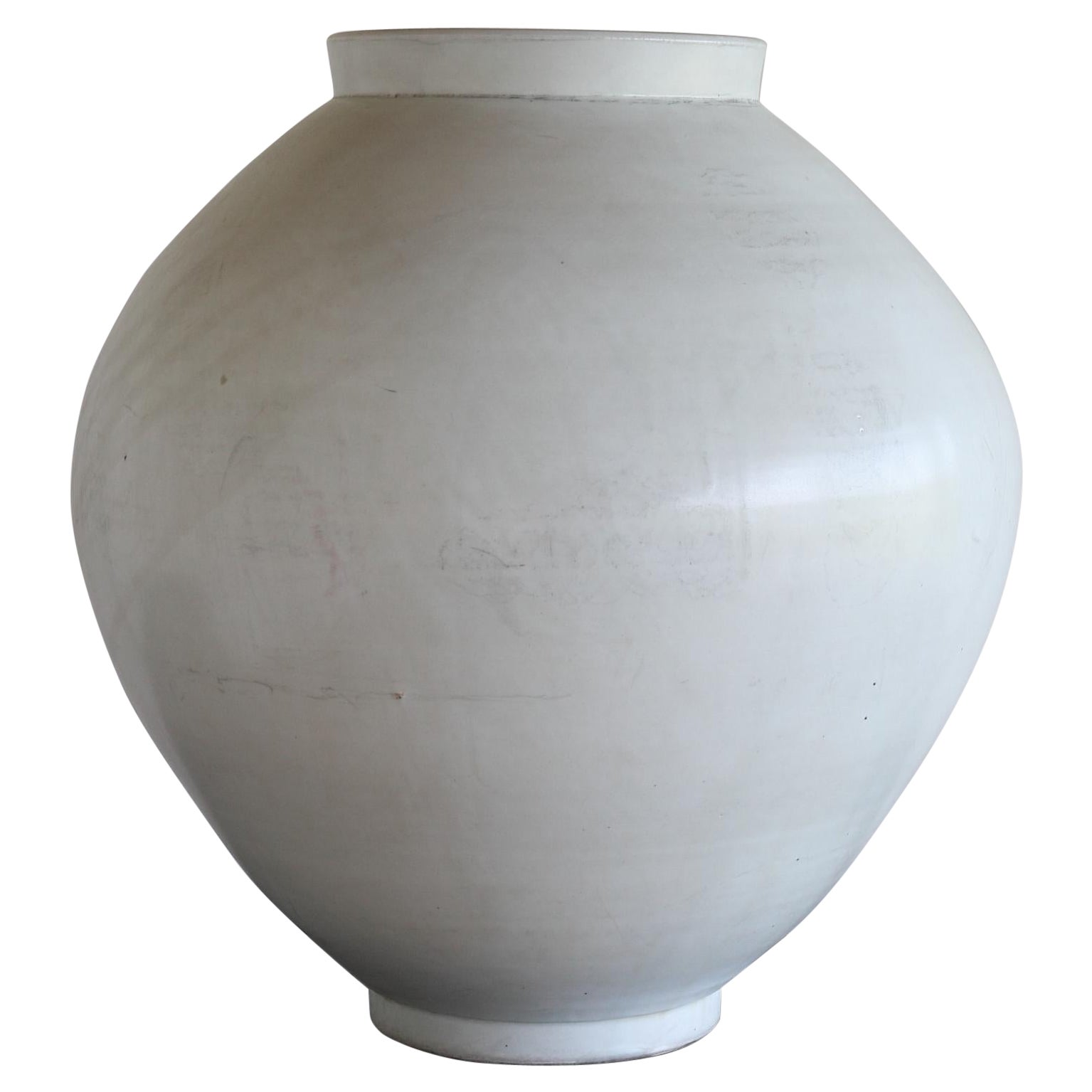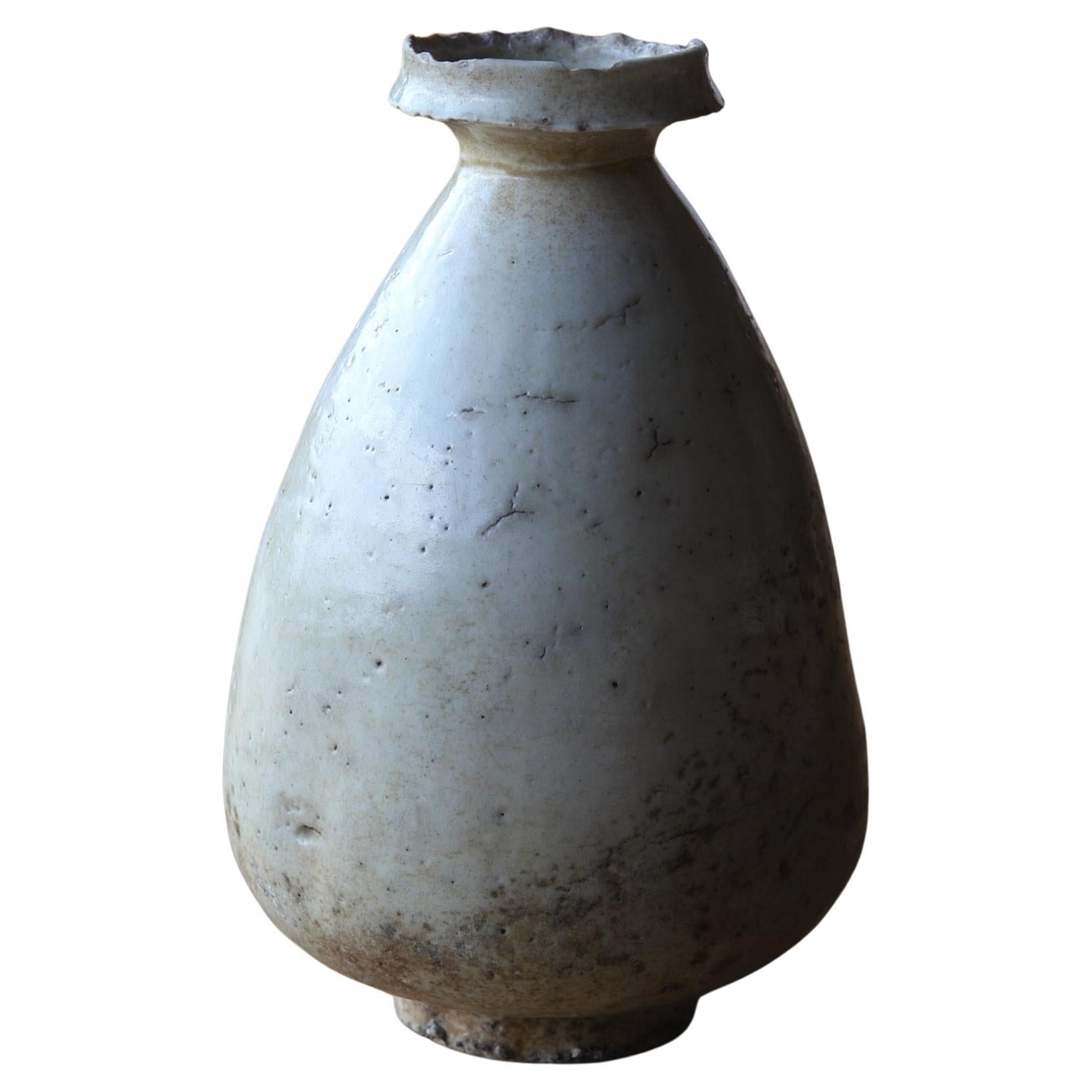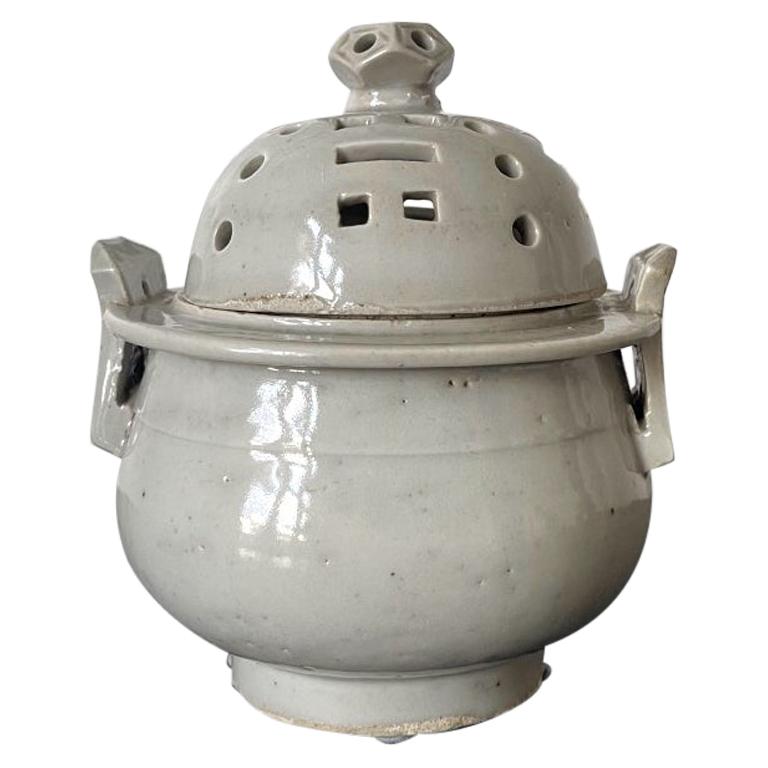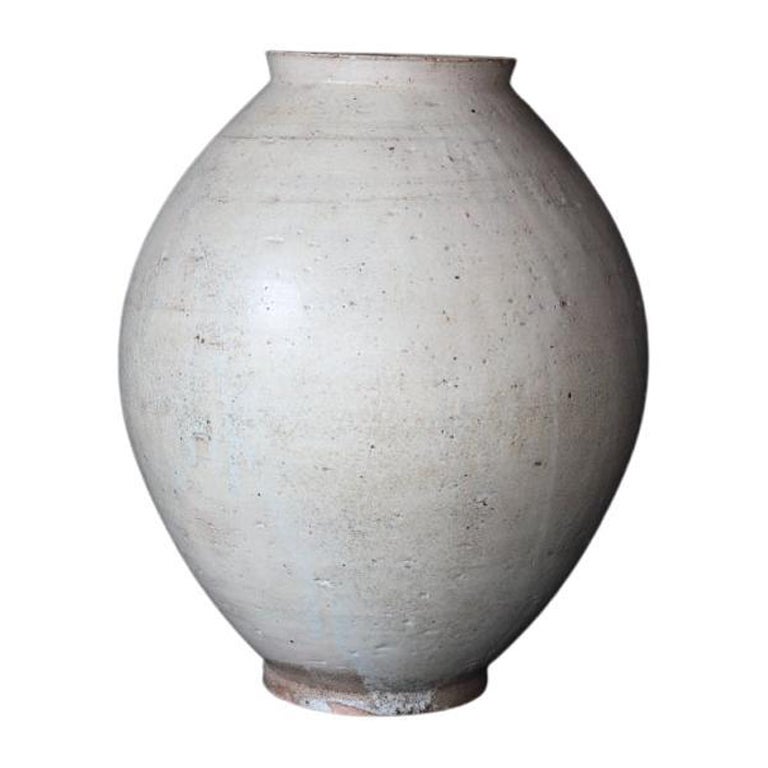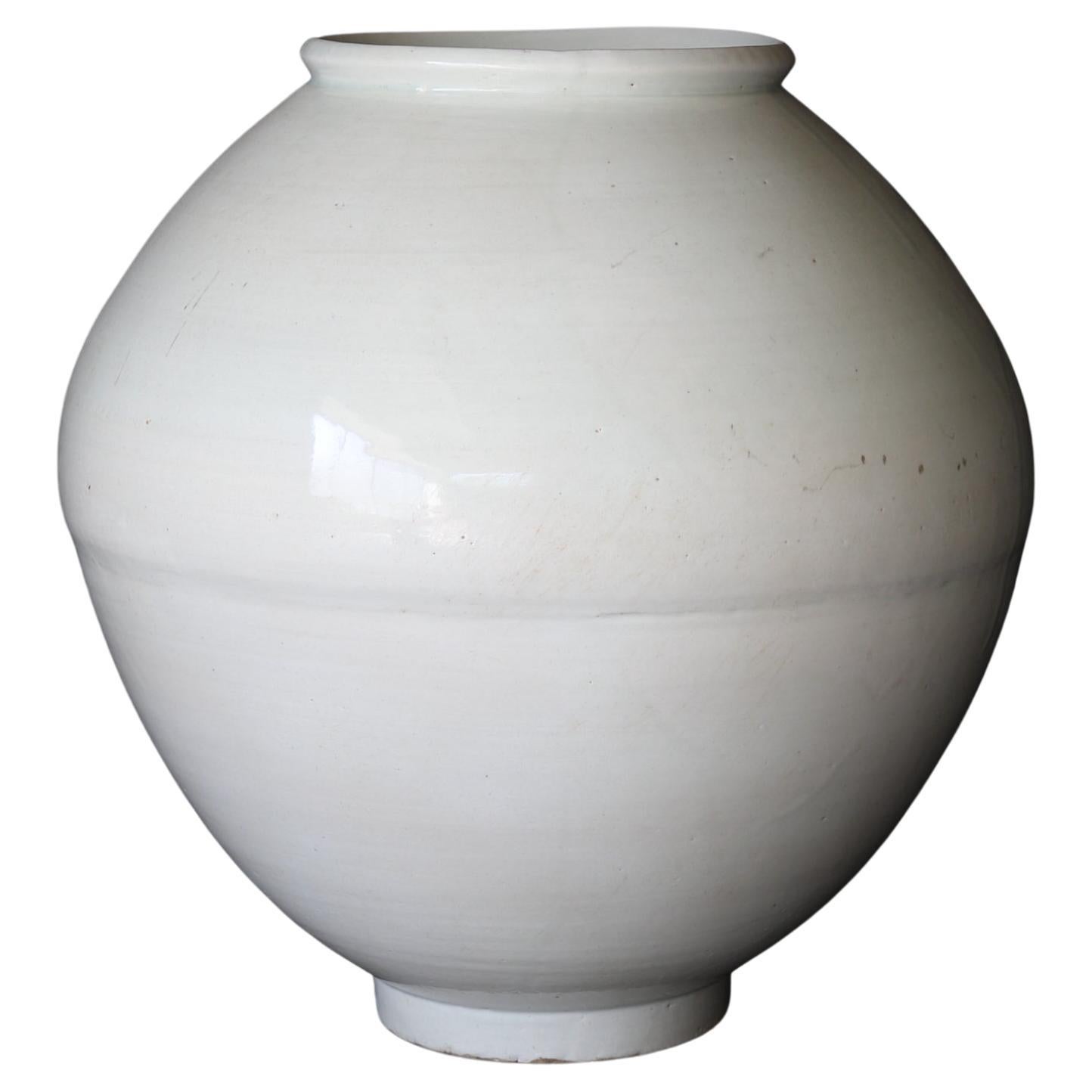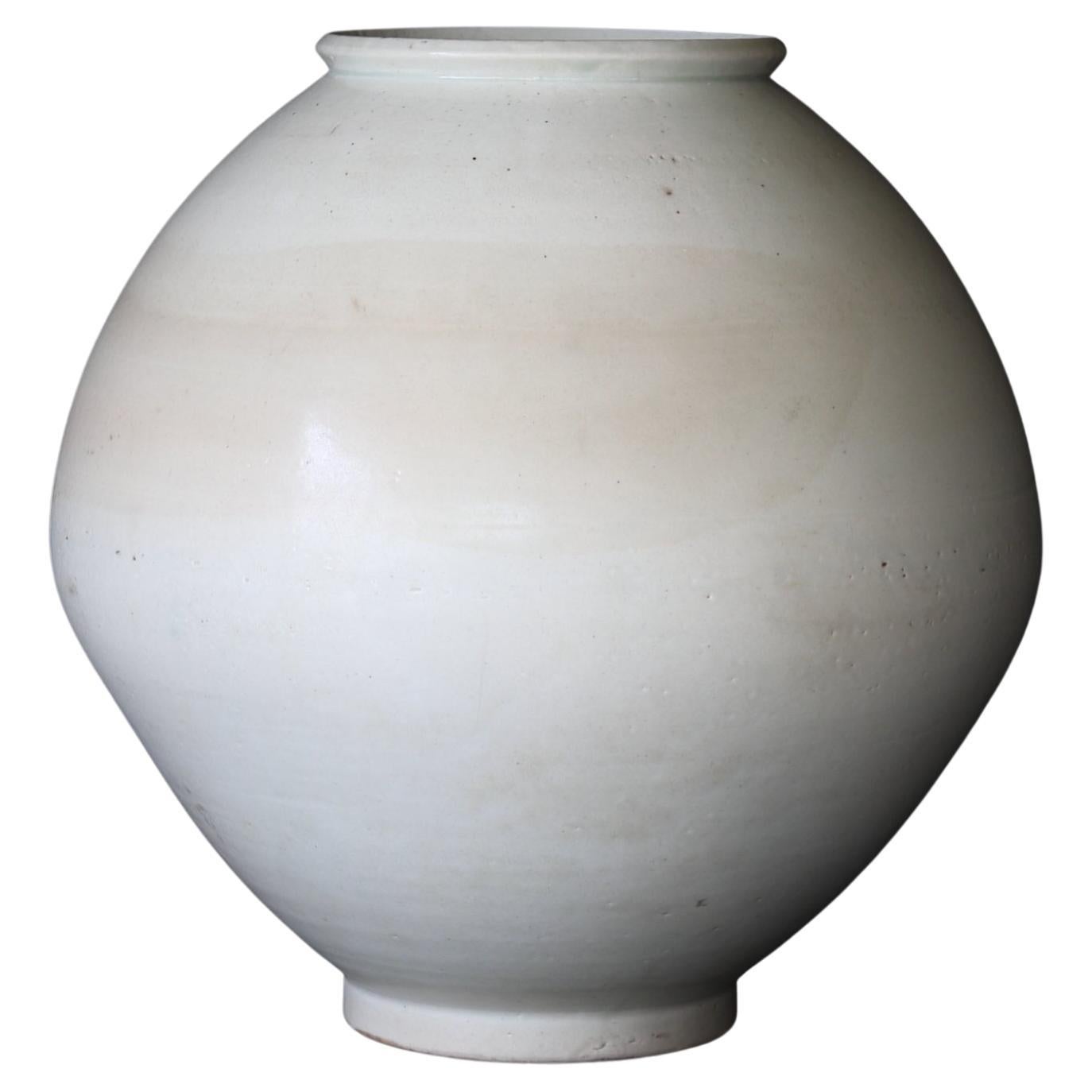Items Similar to White Porcelain Incense Burner / Korean Antique / Joseon Dynasty/1392 - 1897 CE
Want more images or videos?
Request additional images or videos from the seller
1 of 21
White Porcelain Incense Burner / Korean Antique / Joseon Dynasty/1392 - 1897 CE
About the Item
This incense burner presents the characteristics of a typical Yi Dynasty Joseon Dynasty incense burner with a body that rises smoothly from the base, openworked ears and a semi-circular lid.
The white porcelain is baked well, and the rustic white gives you a sense of tranquility.
In the Joseon Dynasty, pottery was not discarded, even if the pot was damaged during firing. A wound-loving spirituality is associated with the Japanese tea aesthetic.
The inside of the furnace is often covered with soot, giving it an atmosphere of being used.
- Dimensions:Height: 9.45 in (24 cm)Width: 7.09 in (18 cm)Depth: 7.09 in (18 cm)
- Materials and Techniques:
- Place of Origin:
- Period:
- Date of Manufacture:1392-1897 CE
- Condition:
- Seller Location:Kyoto-shi, JP
- Reference Number:1stDibs: LU7673233489242
About the Seller
No Reviews Yet
Vetted Seller
These experienced sellers undergo a comprehensive evaluation by our team of in-house experts.
Established in 2012
1stDibs seller since 2022
- ShippingRetrieving quote...Ships From: Kyoto-shi, Japan
- Return PolicyA return for this item may be initiated within 2 days of delivery.
More From This SellerView All
- White Porcelain Moon Jar, Joseon Dynasty / 1392-1897Located in Kyoto-shi, KyotoThis is a white porcelain jar from the mid-Joseon period, also known as a "Talhunari" or "moon jar". During the Joseon Dynasty, which was strongly influenced by Confucianism, the purity of white porcelain was particularly prized in its artistic expression due to its Confucian sensitivity. The defining characteristic of white porcelain during this period was its pure white color, but there were many subtle variations in the white hues, with some being classified as milky white, snowy white, ashen white, and bluish white. The term "Talhunari" means "moon jar" in Korean, and it refers to the large, round shape of the jar, resembling a full moon. It was named by Kim Whanki, a representative abstract painter of Korea. The soft, curving lines and sturdy body that seems to embrace the full moon give the jar both power and tranquility. This type of jar was produced in large quantities during the 17th century. The white of the moon jar is not the pure white of early Joseon porcelain...Category
Antique 18th Century Korean Ceramics
MaterialsCeramic, Porcelain
- White Porcelain Vase / 17th Century / Korean Antiques / Joseon DynastyLocated in Kyoto-shi, KyotoThis product is a white porcelain bottle from the Joseon Dynasty. People in those days used bottles like this to make soap from waste oil. With use, the porcelain frayed and curle...Category
Antique 17th Century Antiquities
MaterialsCeramic, Porcelain
- Moon Jar / Korean Antique vase / Joseon Dynasty / 18th CenturyLocated in Kyoto-shi, KyotoIt's a wonderful moon jar. It is a rare size that is suitable for the alcove of a Japanese tea room. It is shaped at once without connecting the uppe...Category
Antique 18th Century Korean Antiquities
MaterialsCeramic
- Moon Jar 'Dalhanari', Lot3 / 17th Century / Korean Antiques / Joseon DynastyLocated in Kyoto-shi, KyotoThis is a white porcelain jar from the mid-Joseon period, also known as a "Talhunari" or "moon jar". During the Joseon Dynasty, which was strongly influenced by Confucianism, the purity of white porcelain was particularly prized in its artistic expression due to its Confucian sensitivity. The defining characteristic of white porcelain during this period was its pure white color, but there were many subtle variations in the white hues, with some being classified as milky white, snowy white, ashen white, and bluish white. The term "Talhunari" means "moon jar" in Korean, and it refers to the large, round shape of the jar, resembling a full moon. It was named by Kim Whanki, a representative abstract painter of Korea. The soft, curving lines and sturdy body that seems to embrace the full moon give the jar both power and tranquility. This type of jar was produced in large quantities during the 17th century. The white of the moon jar is not the pure white of early Joseon porcelain...Category
Antique 17th Century Korean Ceramics
MaterialsCeramic, Porcelain
- Moon Jar 'Dalhanari' - Lot2 / 17th Century / Korean Antiques / Joseon DynastyLocated in Kyoto-shi, KyotoThis is a white porcelain jar from the mid-Joseon period, also known as a "Talhunari" or "moon jar". During the Joseon Dynasty, which was strongly influenced by Confucianism, the purity of white porcelain was particularly prized in its artistic expression due to its Confucian sensitivity. The defining characteristic of white porcelain during this period was its pure white color, but there were many subtle variations in the white hues, with some being classified as milky white, snowy white, ashen white, and bluish white. The term "Talhunari" means "moon jar" in Korean, and it refers to the large, round shape of the jar, resembling a full moon. It was named by Kim Whanki, a representative abstract painter of Korea. The soft, curving lines and sturdy body that seems to embrace the full moon give the jar both power and tranquility. This type of jar was produced in large quantities during the 17th century. The white of the moon jar is not the pure white of early Joseon porcelain...Category
Antique 17th Century Korean Antiquities
MaterialsCeramic, Porcelain
- Celadon Incense Burner with Peony Arabesque Design/Chinese Antique/14th-17th CLocated in Kyoto-shi, KyotoThis is a Celadon three-legged incense burner with peony arabesque design. Since the 14th century, Dwarf sedge was planted in this pot to decorate the tea room, so in Japan it is ...Category
Antique 15th Century and Earlier Antiquities
MaterialsCeramic
You May Also Like
- Ceramic Ritual Incense Burner with Bagua Pattern Korean Joseon DynastyLocated in Atlanta, GAAn antique Korean ritual incense burner circa 19th century, late Joseon dynasty. It was made in Bunwon Kiln in Gwangju, Gyeonggi Do, near Seoul. The ceramic container has a thickly b...Category
Antique 19th Century Korean Archaistic Ceramics
MaterialsCeramic
- Antique Korean Porcelain Peony Jar Joseon DynastyLocated in Atlanta, GAA Korean white porcelain jar with underglaze blue painting of large peonies with leaves circa second half of 19th century, Joseon Dynasty. Considered associated with Punwon-ri kilns ...Category
Antique Late 19th Century Korean Other Ceramics
MaterialsPorcelain
- Antique Korean Porcelain Peony Jar Joseon DynastyLocated in Atlanta, GAA Korean white porcelain jar with underglaze blue painting of large peonies with leaves circa second half of 19th century, Joseon Dynasty. Considered associated with Punwon-ri kilns ...Category
Antique Late 19th Century Korean Other Ceramics
MaterialsPorcelain
- Antique Korean Ceramic White Bowl Joseon DynastyLocated in Atlanta, GAA Korean ceramic bowl covered in a white glaze with a hint of bluish green circa 18th-19th century, later Joseon Dynasty. The deep bowl features a class...Category
Antique 19th Century Korean Archaistic Ceramics
MaterialsCeramic
- Antique Korean Ceramic White Bowl Joseon DynastyLocated in Atlanta, GAA Korean ceramic rice bowl covered in a white glaze with a hint of bluish green color circa 19th century toward the end of Joseon Dynasty. The deep bowl...Category
Antique 19th Century Korean Other Ceramics
MaterialsCeramic
- Antique Korean Porcelain Jar with Pheonix Design Joseon DynastyLocated in Atlanta, GAA korean white porcelain jar with underglaze blue paint circa late 19th century toward the end of Joseon Dynasty. Porcelain jars of this elongated form with swell shoulder, wide mout...Category
Antique Late 19th Century Other Ceramics
MaterialsPorcelain
